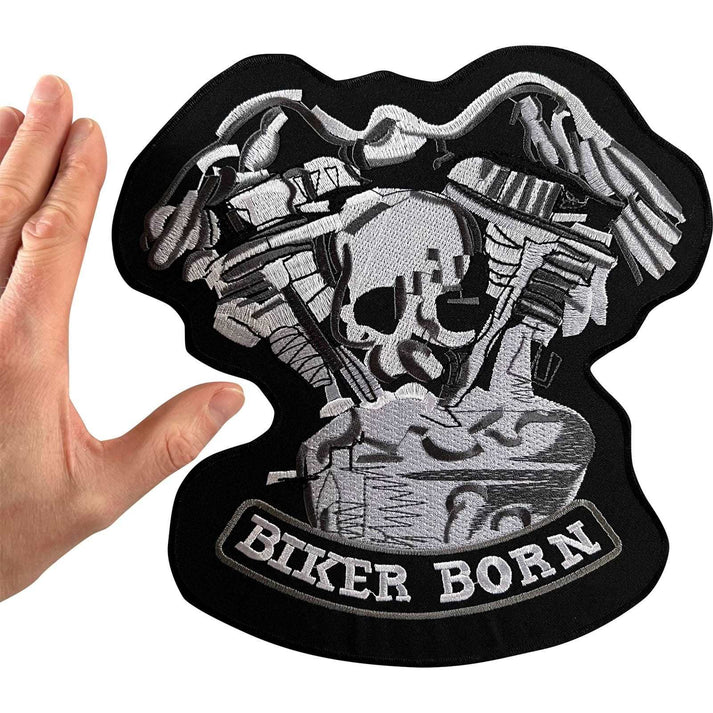Understanding Motorcycle Patches:
Motorcycle patches come in a variety of shapes, sizes, and designs, each carrying its own meaning and significance. From club patches that denote membership in biker gangs to custom patches that showcase individuality and personal flair, these embroidered badges serve as visual representations of a rider's identity and affiliations.
Ironing on Motorcycle Patches:
Ironing on motorcycle patches is a popular method for attaching them to vests, jackets, and other riding gear. To iron on a patch, start by placing the patch in the desired position on the fabric. Then, cover the patch with a thin cloth or parchment paper to protect it from direct heat. Next, preheat your iron to the appropriate temperature for the fabric and press it firmly over the patch for 10-15 seconds. Allow the patch to cool before checking the adhesion. If necessary, repeat the process until the patch is securely attached.
Sewing on Motorcycle Patches:
While ironing is a quick and convenient method for attaching patches, sewing provides a more durable and long-lasting bond, especially for heavy-duty fabrics like leather. To sew on a patch, thread a needle with sturdy thread that matches the patch and fabric. Then, carefully stitch around the edges of the patch, making sure to secure it firmly to the fabric. For added reinforcement, consider sewing an additional border around the patch or stitching along any intricate details.
Ironing Motorcycle Patches on Leather:
Many riders wonder if it's possible to iron patches onto leather, and the answer is yes—with a few caveats. While leather can withstand heat, it's essential to use caution and test a small, inconspicuous area first to ensure that the leather won't be damaged by the heat of the iron. Additionally, be sure to use a thin cloth or parchment paper to protect the patch and prevent any potential damage to the leather surface.
Attaching Patches to Motorcycle Vests and Jackets:
Motorcycle vests and jackets serve as blank canvases for riders to display their patches proudly. Whether you're a member of a biker gang or simply want to showcase your personal style, adding patches to your riding gear can enhance its visual appeal and make a statement on the road. When attaching patches to vests and jackets, consider the placement carefully to ensure that they are visible and balanced. Additionally, be mindful of any seams or pockets that may interfere with the attachment process.
The Cultural Significance of Biker Gangs:
Biker gangs, also known as motorcycle clubs or MCs, play a significant role in the world of motorcycle culture. These groups often have their own unique patches, symbols, and rituals that distinguish them from other clubs and create a sense of brotherhood among members. While some biker gangs have gained notoriety for their involvement in criminal activities, many clubs are simply groups of riders who share a passion for motorcycles and the open road.
Conclusion:
Motorcycle patches are more than just decorative accessories—they're symbols of identity, belonging, and camaraderie within the biker community. Whether you're ironing on a club patch, sewing on a custom design, or adding embellishments to your riding gear, understanding the proper techniques for attaching patches is essential. By following the guidelines outlined in this guide, you can proudly display your patches and embrace the rich heritage and culture of motorcycle riding.

